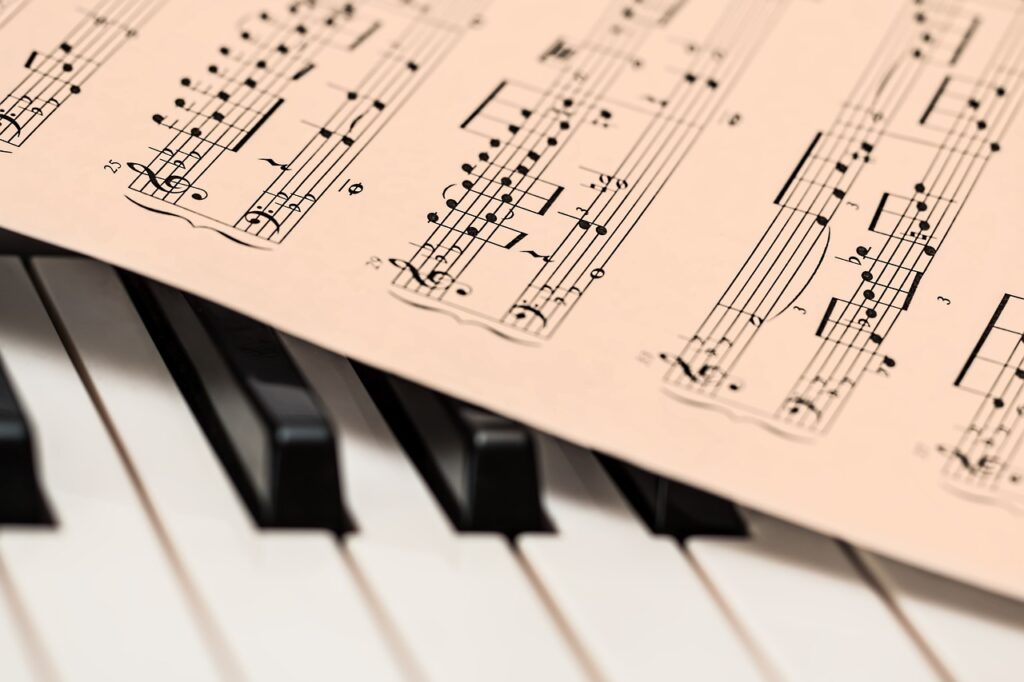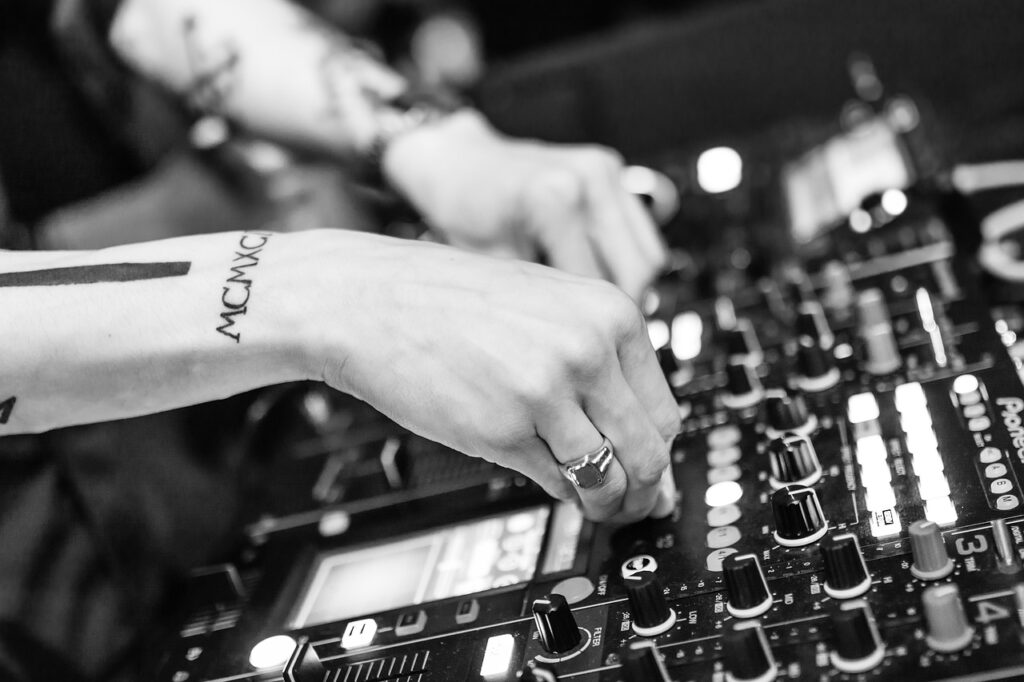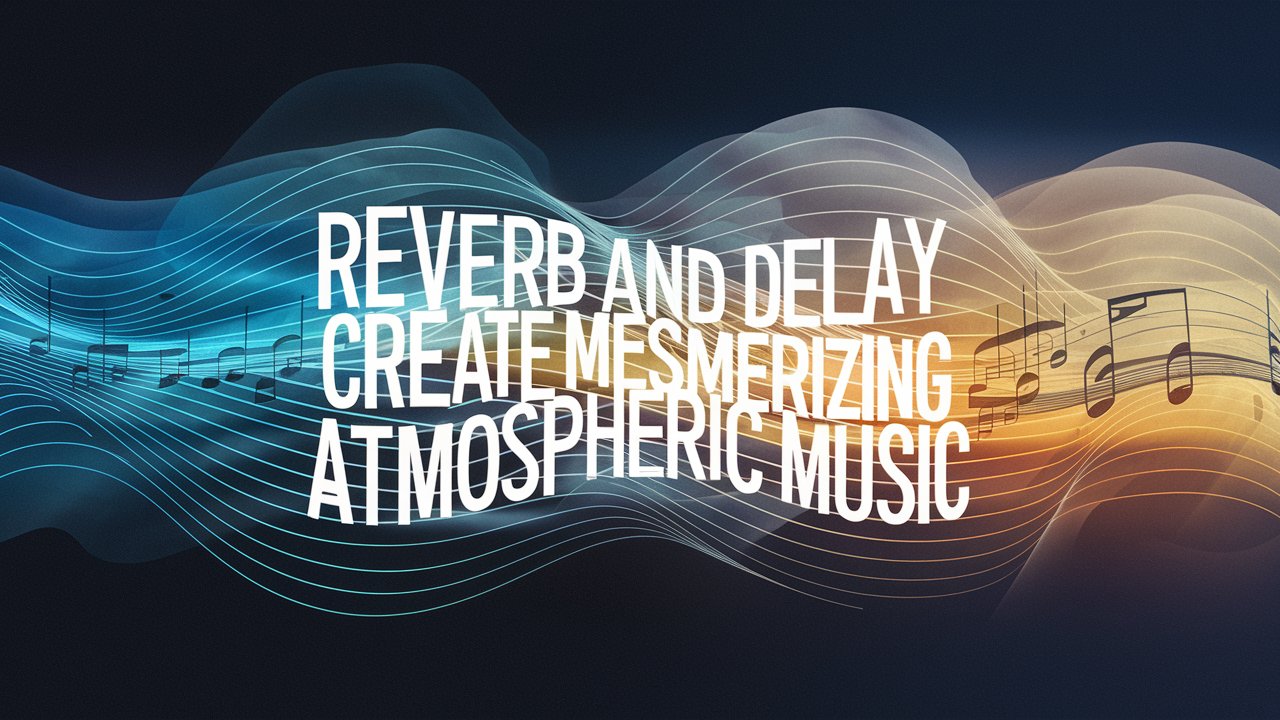Ambient music can take listeners to faraway regions, stirring emotions and creating vivid mental images. The audience is immersed in this ethereal, surreal genre. The use of reverb and delay effects is crucial to creating such fascinating music. These two audio processing techniques let musicians create sonic tapestries that immerse listeners in a unique sonic experience.
The role of reverb and delay in atmosphere

Music producers and sound engineers need reverb and delay to make atmospheric music. These effects may make a simple sound sound massive, giving depth, dimension, and space to the piece. Reverb mimics the natural acoustics of different environments by reflecting sound waves.
Also Read Our Article About “Mastering the Mix: Tips for Balancing Audio Levels in Your Tracks“
Reverb factors like decay time, pre-delay, and diffusion can give artists the impression of performing in a cathedral, cavern, or ethereal place. This capacity to modify sound allows musicians to create music that transports listeners to different places and periods, triggering emotions and creating an immersive experience.
Understanding reverb:

Each type of reverb has its own sound. Plate reverb mimics the sound of a vibrating metal plate, creating a bright, rich sound. However, spring reverb mimics sound flowing through metal springs, giving it a metallic sound. Convolution reverb lets musicians reproduce the acoustics of concert halls, cathedrals, and even natural settings using digital samples. By using different reverbs, musicians can get the right sound for their songs.
Decay time is important for reverb settings. Increasing the decay time creates a more spacious and immersive sound, while decreasing it tightens and focuses it. Another factor affecting space perception is pre-delay. A greater pre-delay makes the listener feel farther from the sound source and reflective surfaces, while a shorter one creates intimacy. Higher diffusion and density settings create a more diffuse and luscious reverb. By tweaking these parameters, musicians can create the right reverb effect for their work.
Exploring delay:

Reverb adds space and envelopment, while delay adds rhythm and temporal complexity. Delay creates echoes and rhythmic patterns by repeating the original sound after a set time. It can range from barely audible repeats to cascading echoes that drown the listener. Different delay effects have different features.
The lush, saturated tone of analog delay recalls ancient tape machines. It gives delay repeats a charming, organic appearance, and its faults add to the impact. However, digital delay provides accurate repeats for greater control and versatility.
Modern productions that require clarity and precision employ it. Like analog delay, tape delay adds warmth and saturation to repeats by mimicking tape machines. By trying different delays, musicians can get the right sound for their songs.
Delay can be used creatively for fascinating consequences. By altering feedback and delay time, musicians can build rhythmic patterns that match the speed, giving the song a throbbing aspect.
Changing the delay length or adding filters and modulation effects to the delayed sound can generate distinctive and developing textures that improve the music’s atmosphere. Longer delay lengths and lower feedback levels can generate spacious and immersive soundscapes. These methods let artists experiment with delay and generate strange sounds.
A case study:

Many famous songs have shown how reverb and delay may change ambient music. Reverb and delay can set a song’s mood, like in Pink Floyd’s “Comfortably Numb”. David Gilmour’s haunting guitar solos are rendered in thick reverb, evoking a feeling of immensity and melancholy. The voice delay creates an ethereal, mystical atmosphere that transports listeners.
The song “Paranoid Android,” by Radiohead, uses delay and reverb to enhance depth and texture. The cascading guitar arpeggio delays are fascinating, and the vocal reverb emphasizes the sad and introspective lyrics. These songs show how reverb and delay can enhance a song and make it immersive.
Reverb and delay plugins

Fortunately, musicians and producers may use many tools and plugins to add reverb and delay effects. There are several hardware and software plugin alternatives for different budgets and production configurations.
Valhalla Room, a renowned reverb plugin, offers delicate, natural, plush, and ambient sounds. Another good alternative is Lexicon PCM Native Reverb Bundle, which emulates famous reverb units realistically. Free reverb plugins like OrilRiver and Ambience offer high-quality effects without breaking the bank.
Delay plugins like Soundtoys EchoBoy and Waves H-Delay offer many delay kinds and creative capabilities. These plugins let musicians experiment with delay soundscapes and rhythmic patterns to add complexity to their songs. Additionally, D16 Group’s Repeater and Eventide’s UltraTap offer unique delay effects that can take listeners on an audio journey like no other.
How to use reverb and delay in music production

Reverb and delay are strong tools, but they should be used carefully in music creation. Tips for creating ambient effects:
Experimentation matters: Try different reverb and delay settings. Each song is unique, and the correct effects may boost it.
Consider context: Consider the atmosphere, theme, and concept of your composition. Reverb and delay should increase the music’s emotional impact.
Start subtly: Start with mild settings and progressively increase effect intensity to find the right balance. Sometimes little is more, and a subtle reverb or delay can work better than too much.
Automation: Try automating reverb and delay throughout the composition. This can create captivating soundscapes that change over time.
Critically listen: Watch how reverb and delay interact with other mix elements. They shouldn’t dominate vocals or main instruments.
Avoid these reverbs and delay blunders

Reverb and delay can enhance your song, but there are certain typical mistakes:
Overusing effects: Excess reverb or delay can muddy your mix. There must be a balance between space and clarity.
Unsuitable settings: Be careful with reverb and delay settings. Incorrect settings might produce a discordant sound that detracts from the music’s atmosphere.
Lack of integration: Integrate reverb and delay effects smoothly into the mix. They should improve the composition without calling attention to themselves.
Ignoring the mix: Reverb and delay should complement the mix. Be aware of how they interact with other instruments and vocals and change accordingly.
Pushing limits and experimenting:
Reverb and delay settings and techniques are established, but experimentation and pushing the limits are crucial. Try unusual settings or combinations to make new sounds. Pushing reverb and delay can reveal new sounds and give your music a unique sound.
Conclusion:
Finally, reverb and delay are essential for atmospheric music. They may create dreamy, enveloping soundscapes that evoke emotions and take listeners to faraway regions.
By understanding reverb and delay types, settings, and approaches, artists can use them to produce interesting tunes. The haunting reverb on a guitar solo or the rhythmic patterns of a cascading delay lend depth, complexity, and mood to the song, making it immersive and unforgettable.

